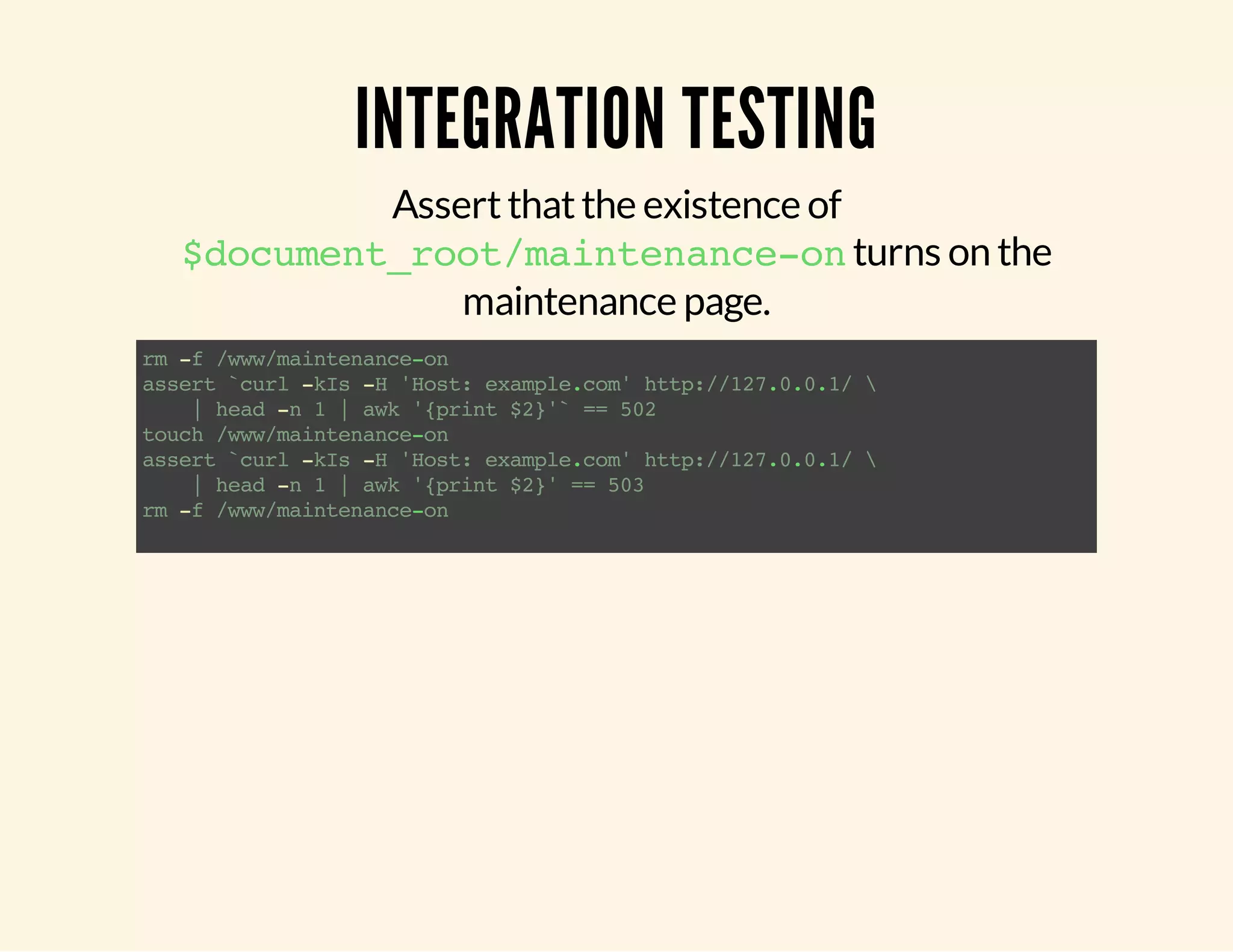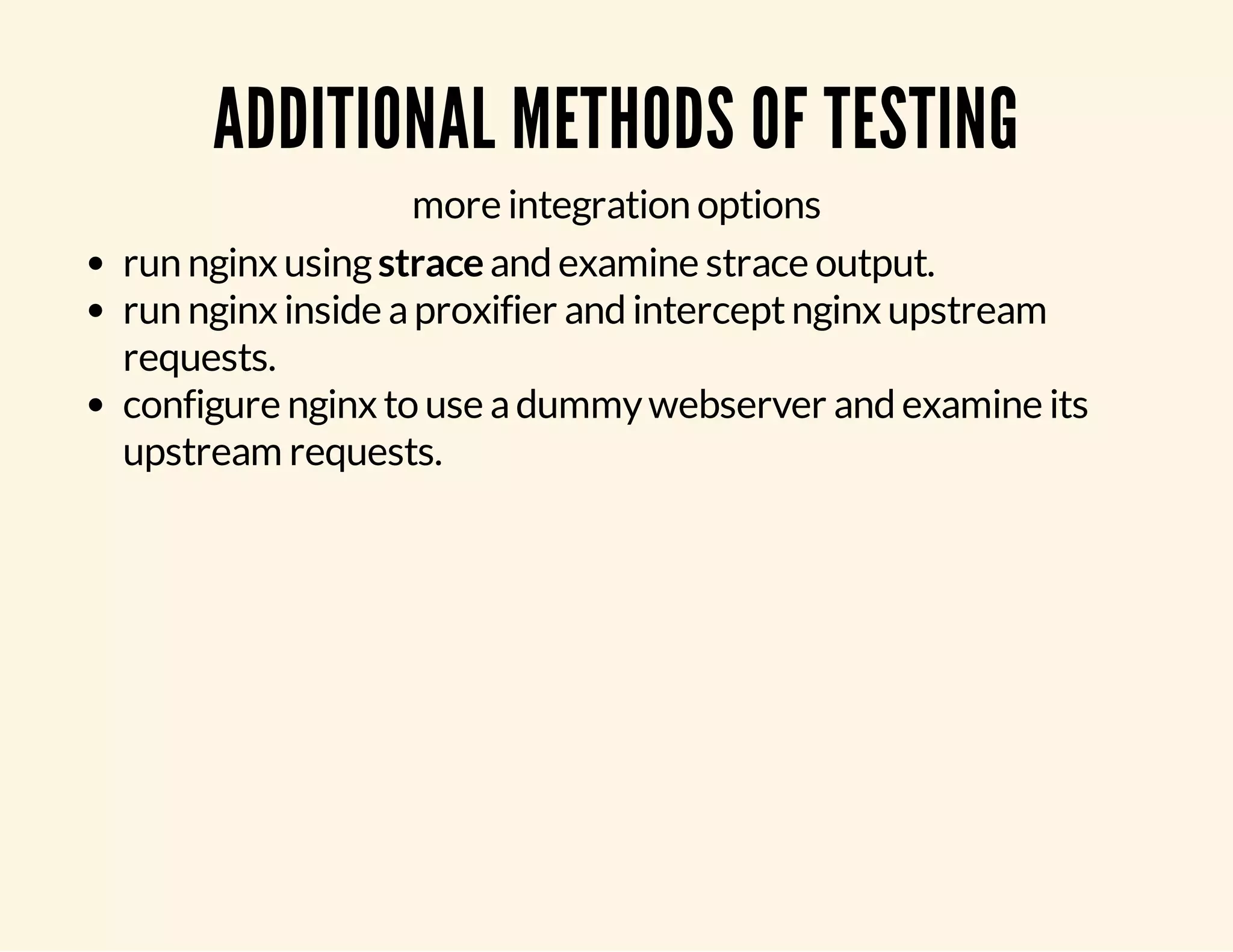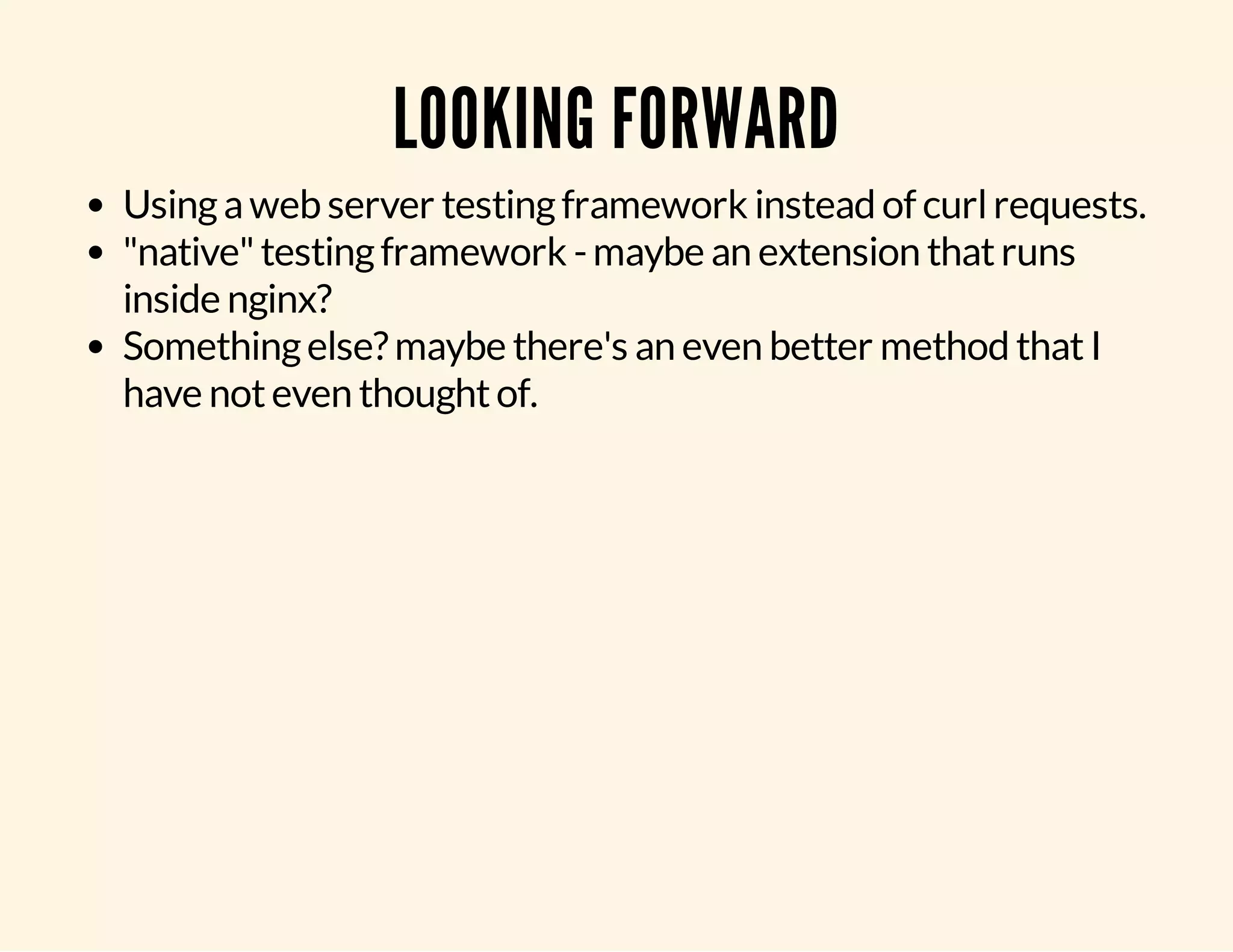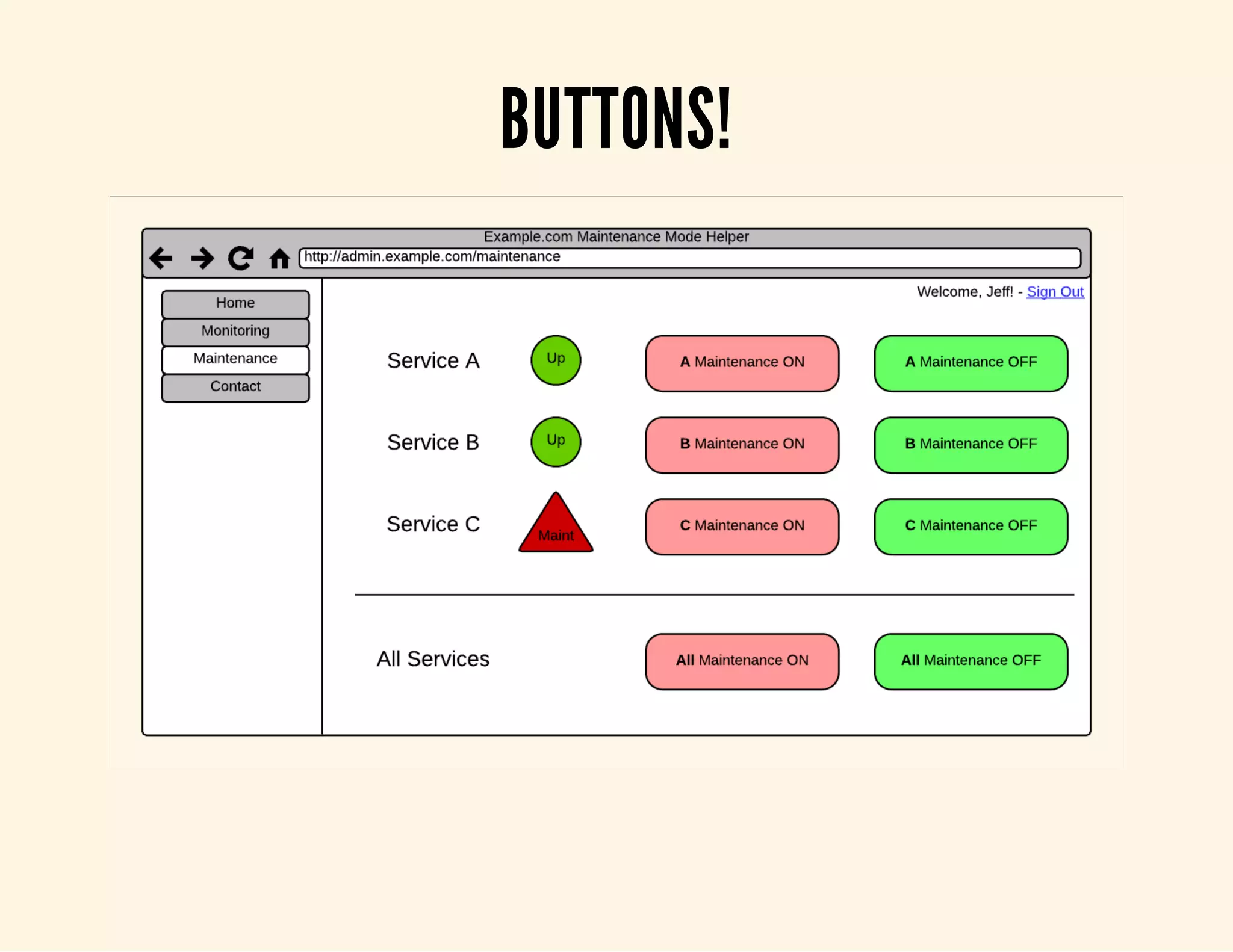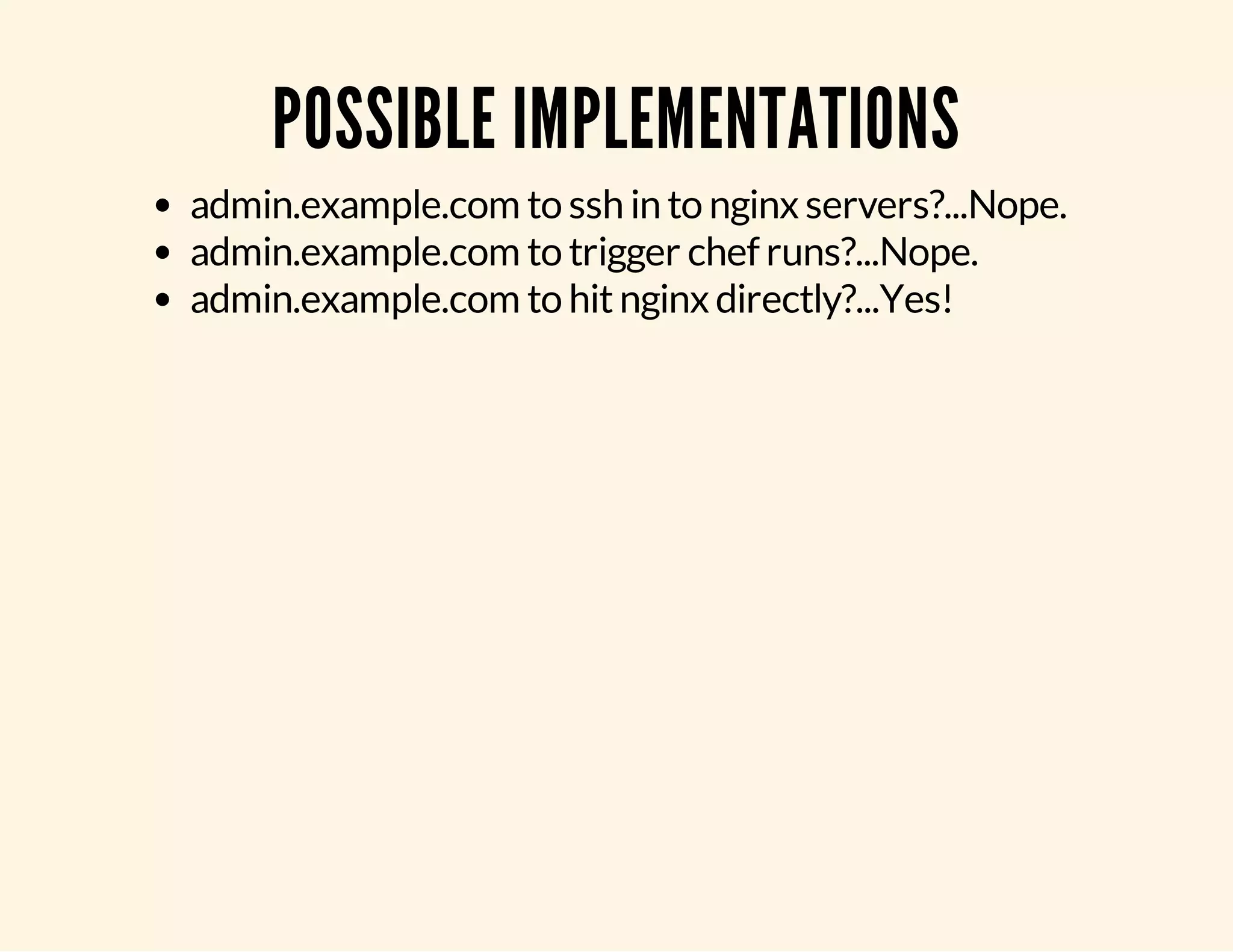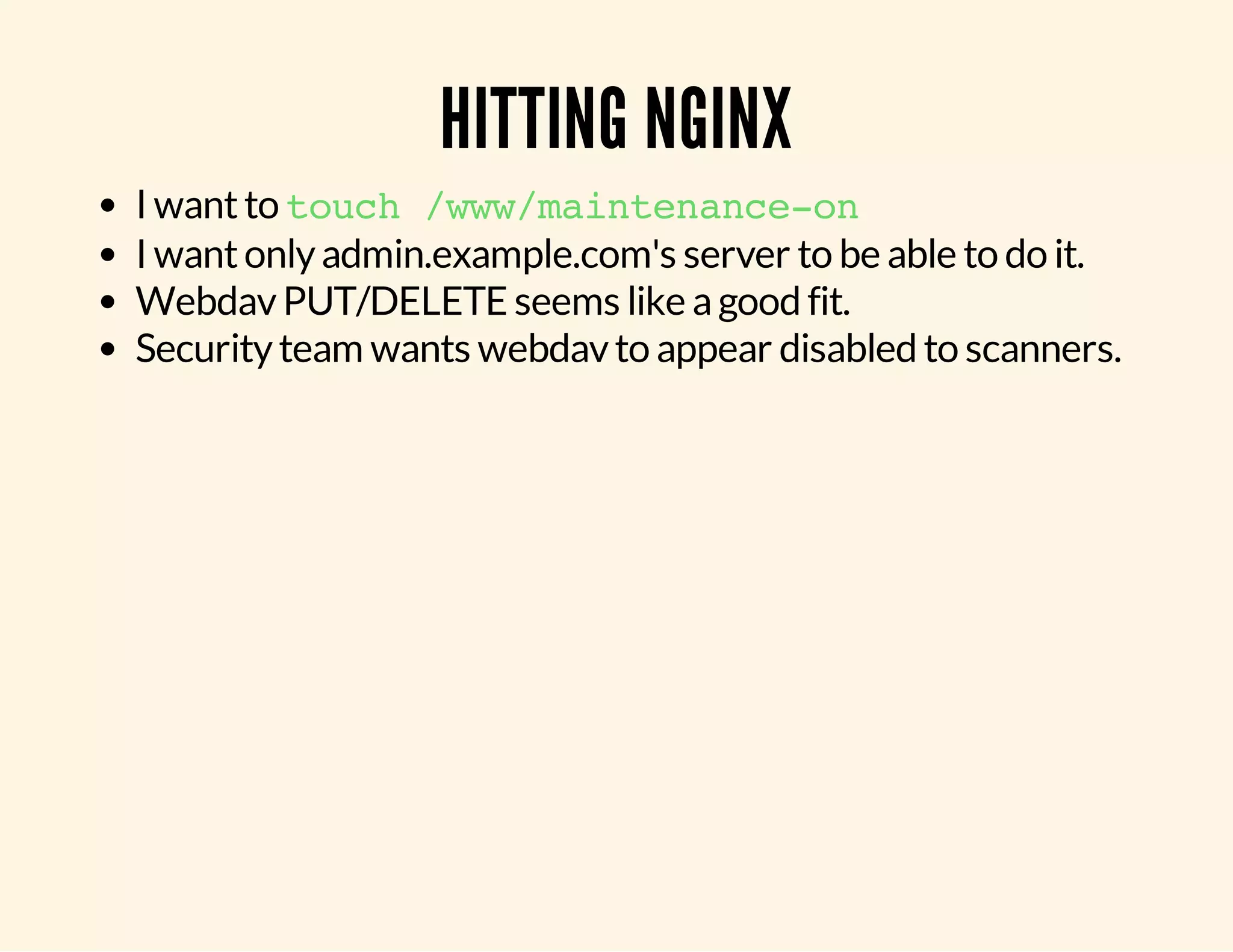The document discusses the configuration and testing of nginx, highlighting its capabilities for different environments and requirements such as caching and access control. It outlines strategies for generating nginx config files dynamically, conducting thorough testing using integration tests, and maintaining service uptime with a maintenance page implementation. The author emphasizes the importance of proper testing frameworks and automation for efficient nginx management, particularly in production and development environments.



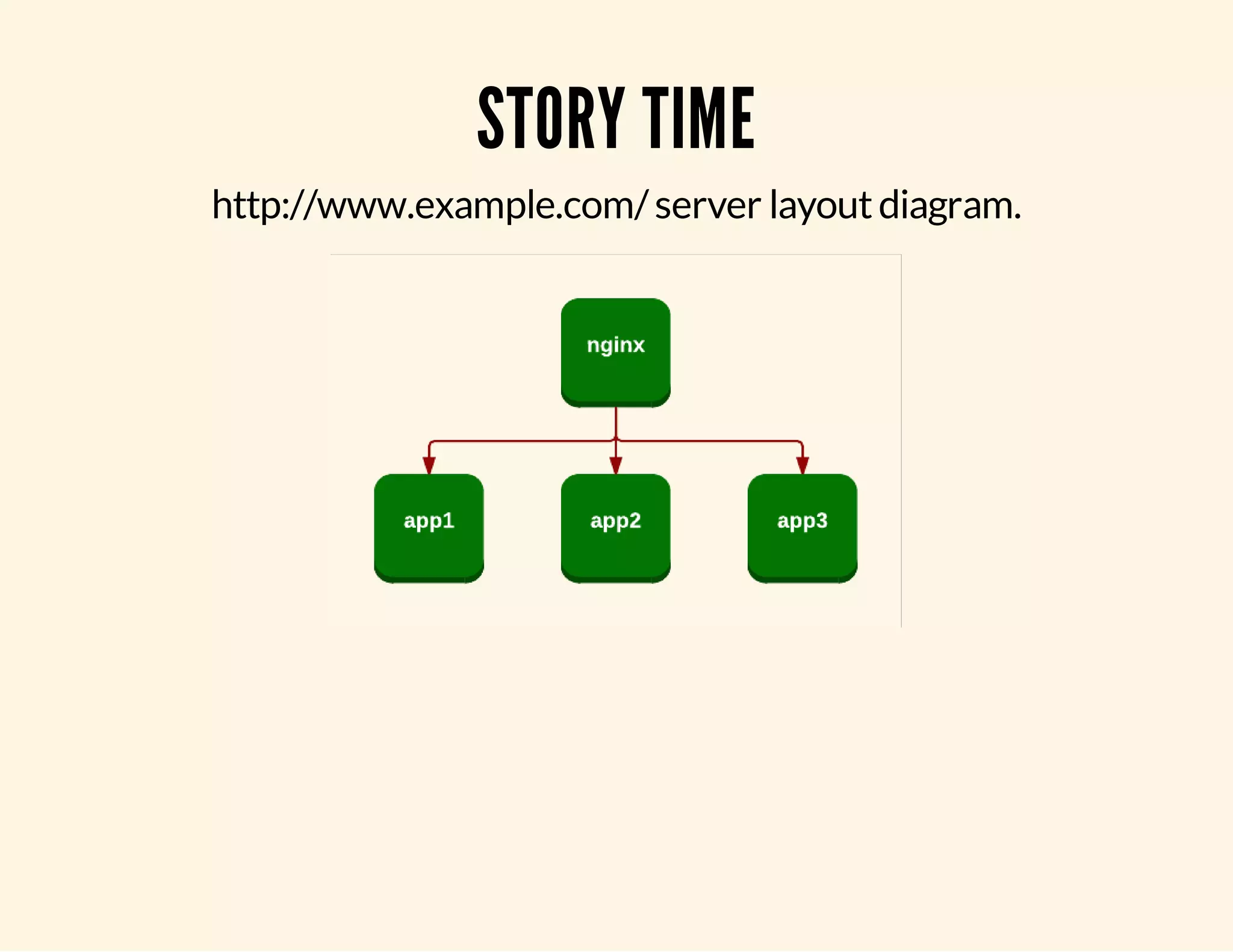
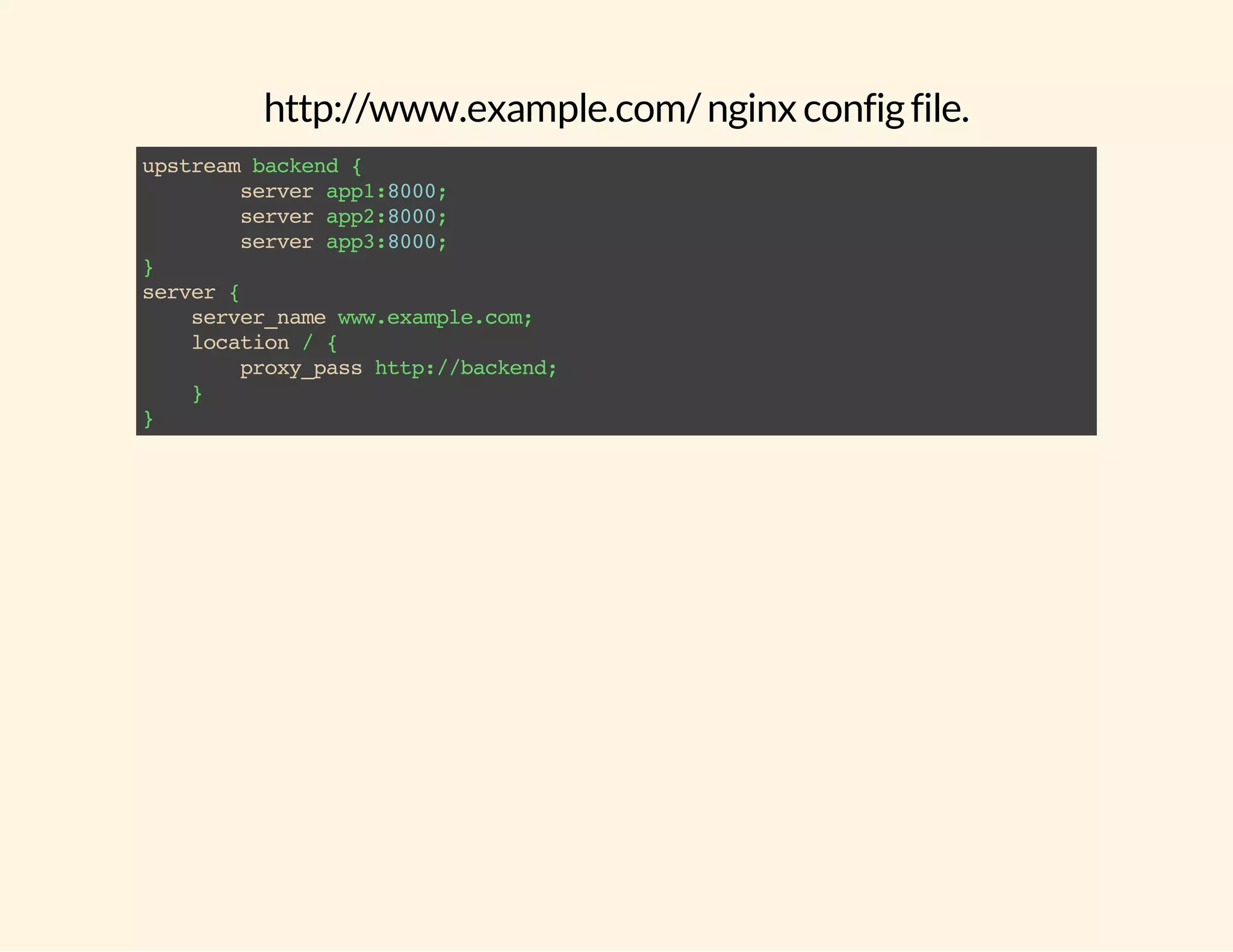

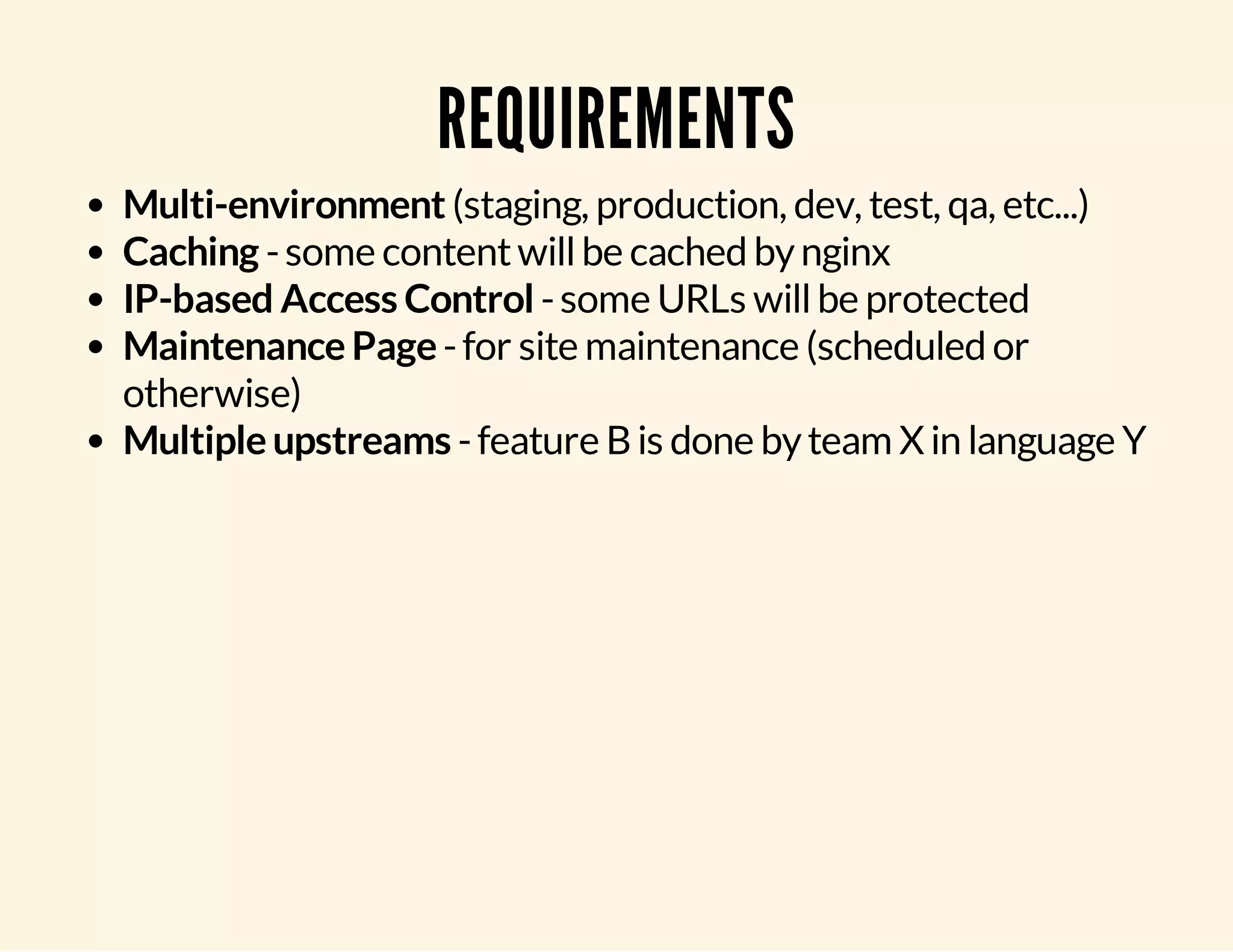
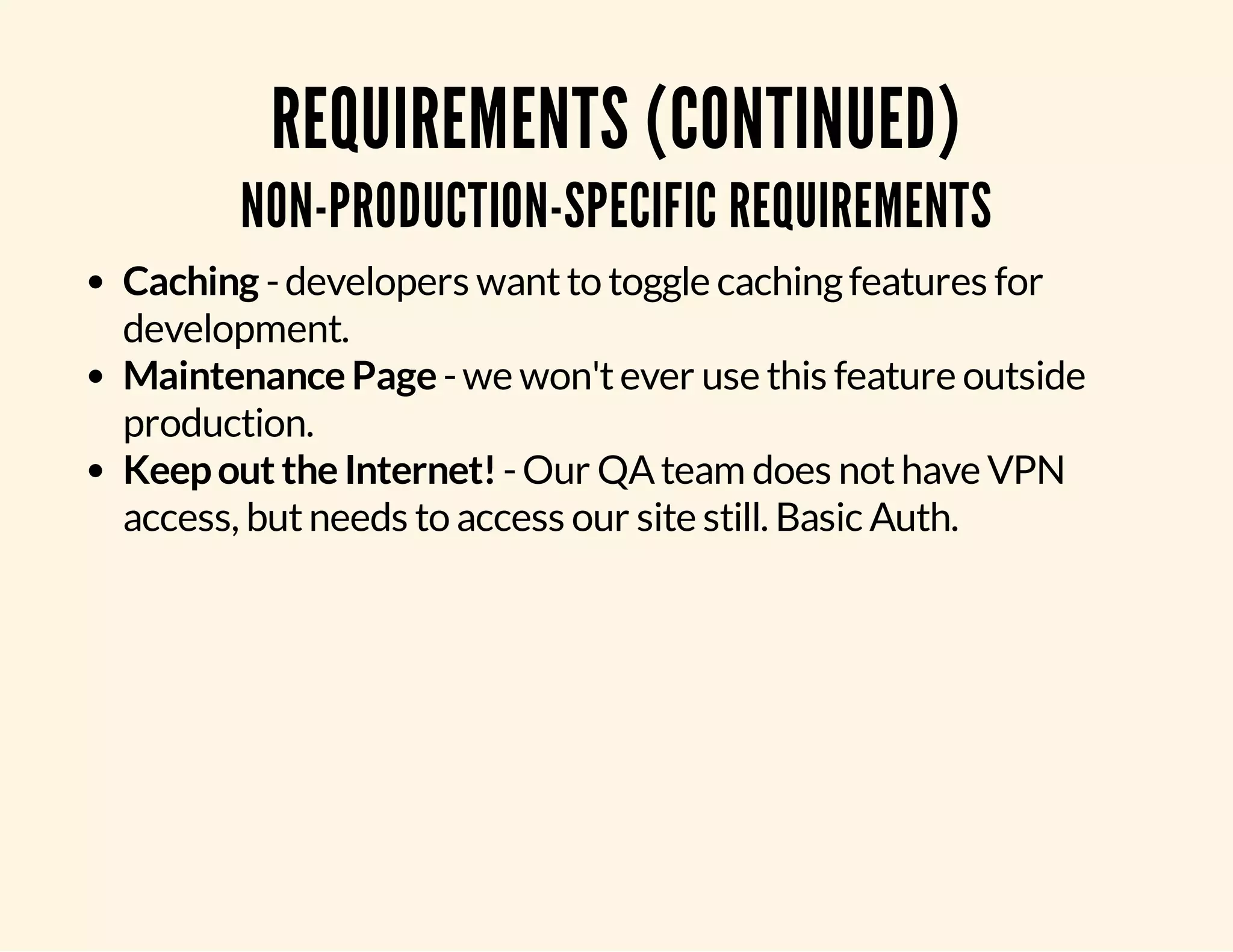
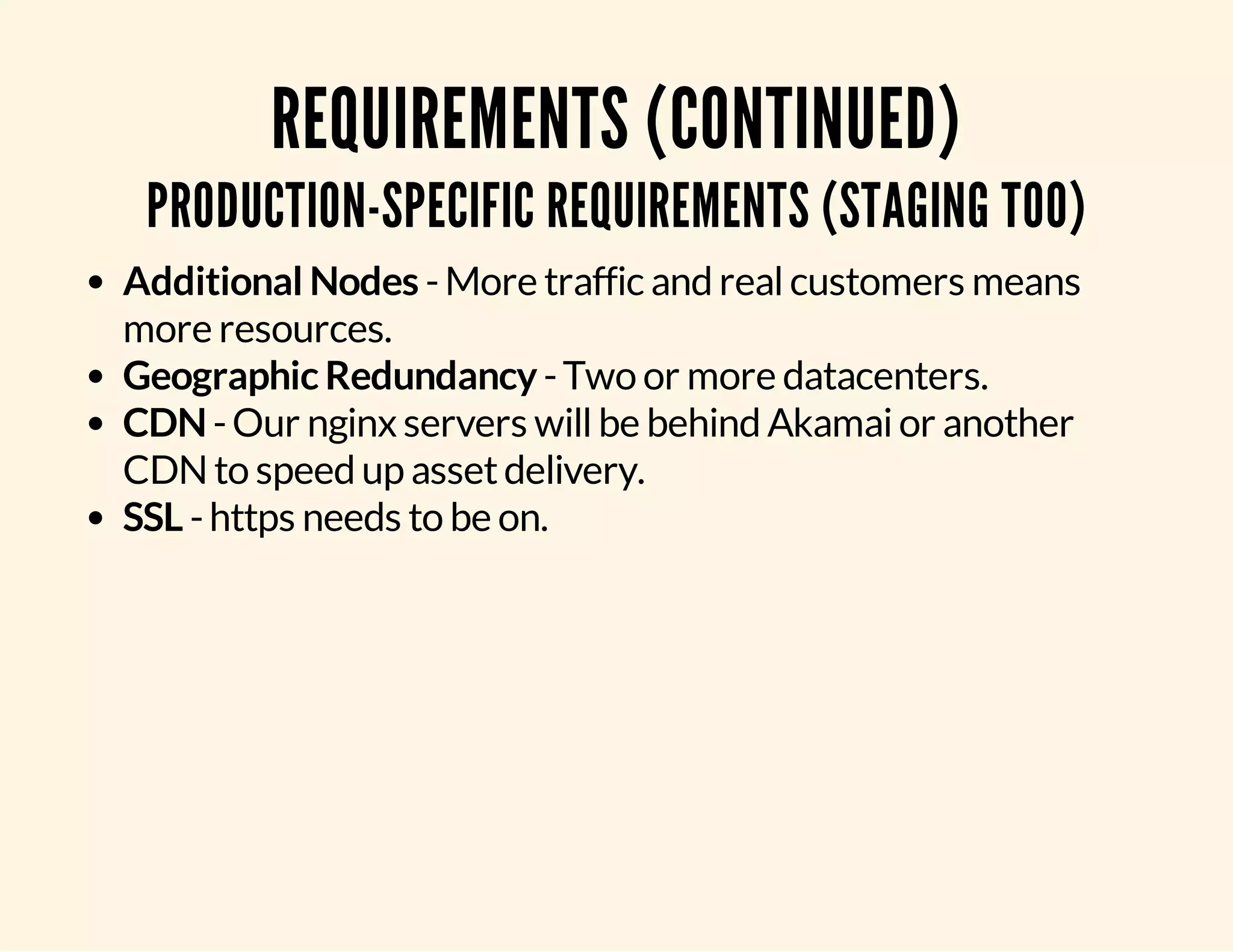
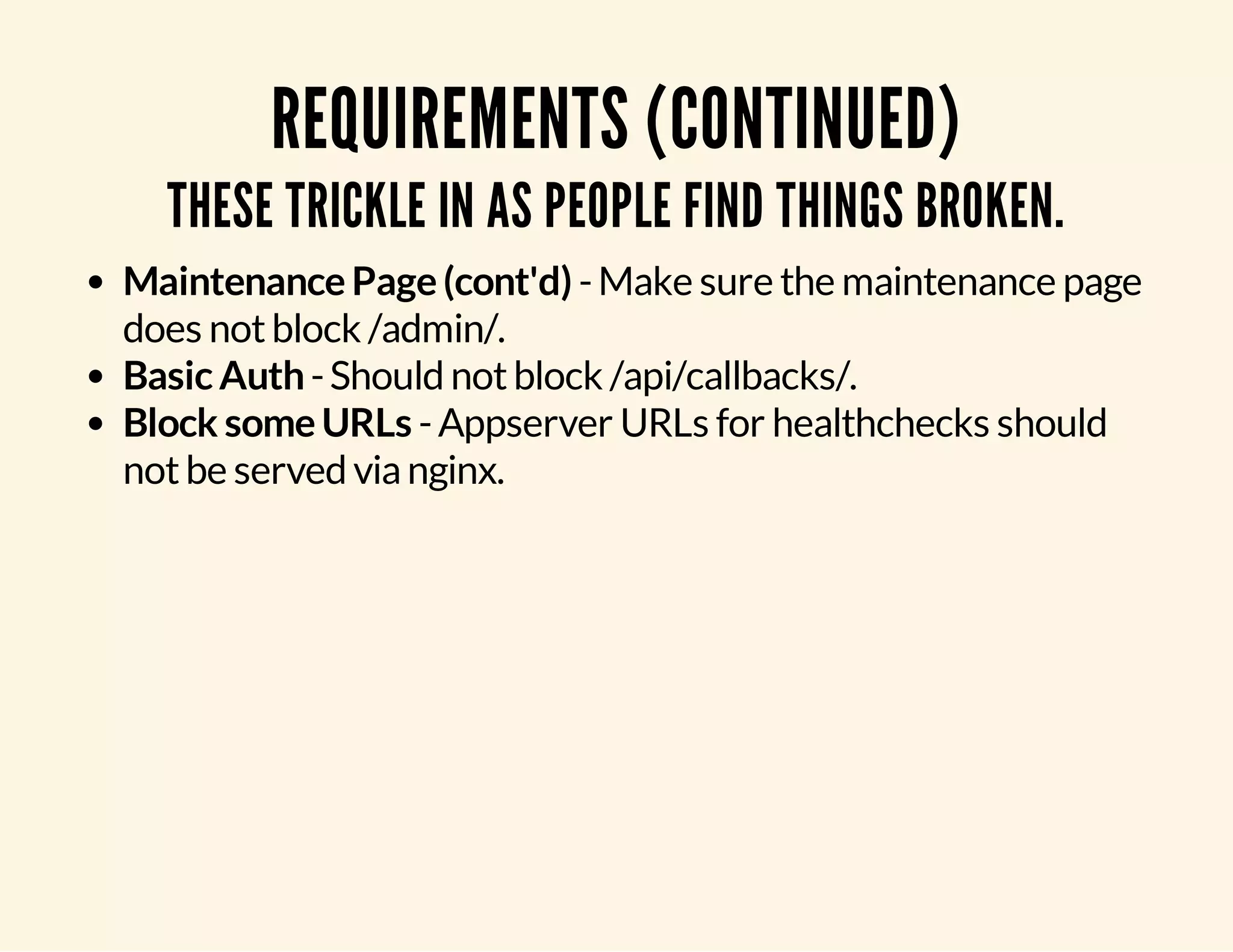







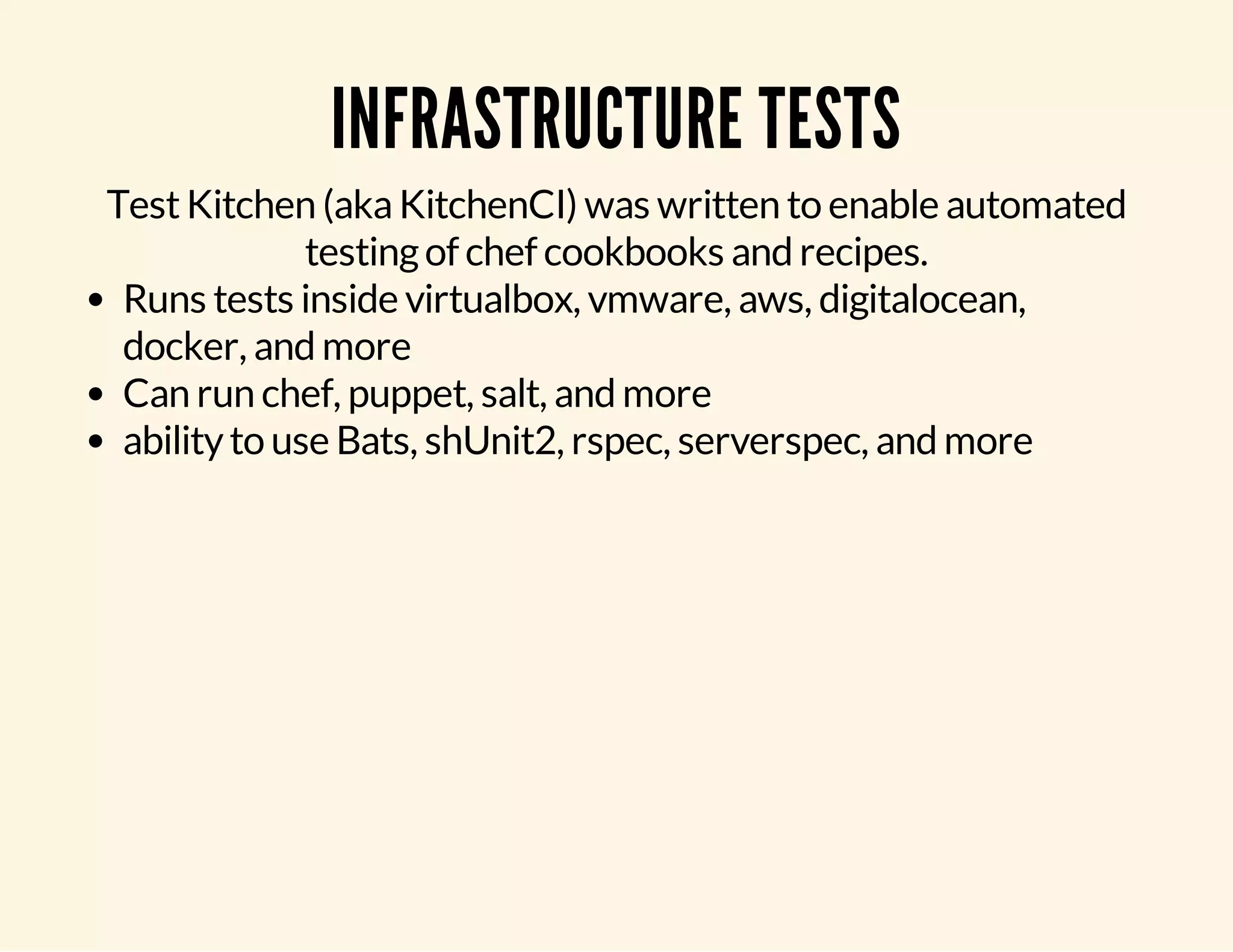
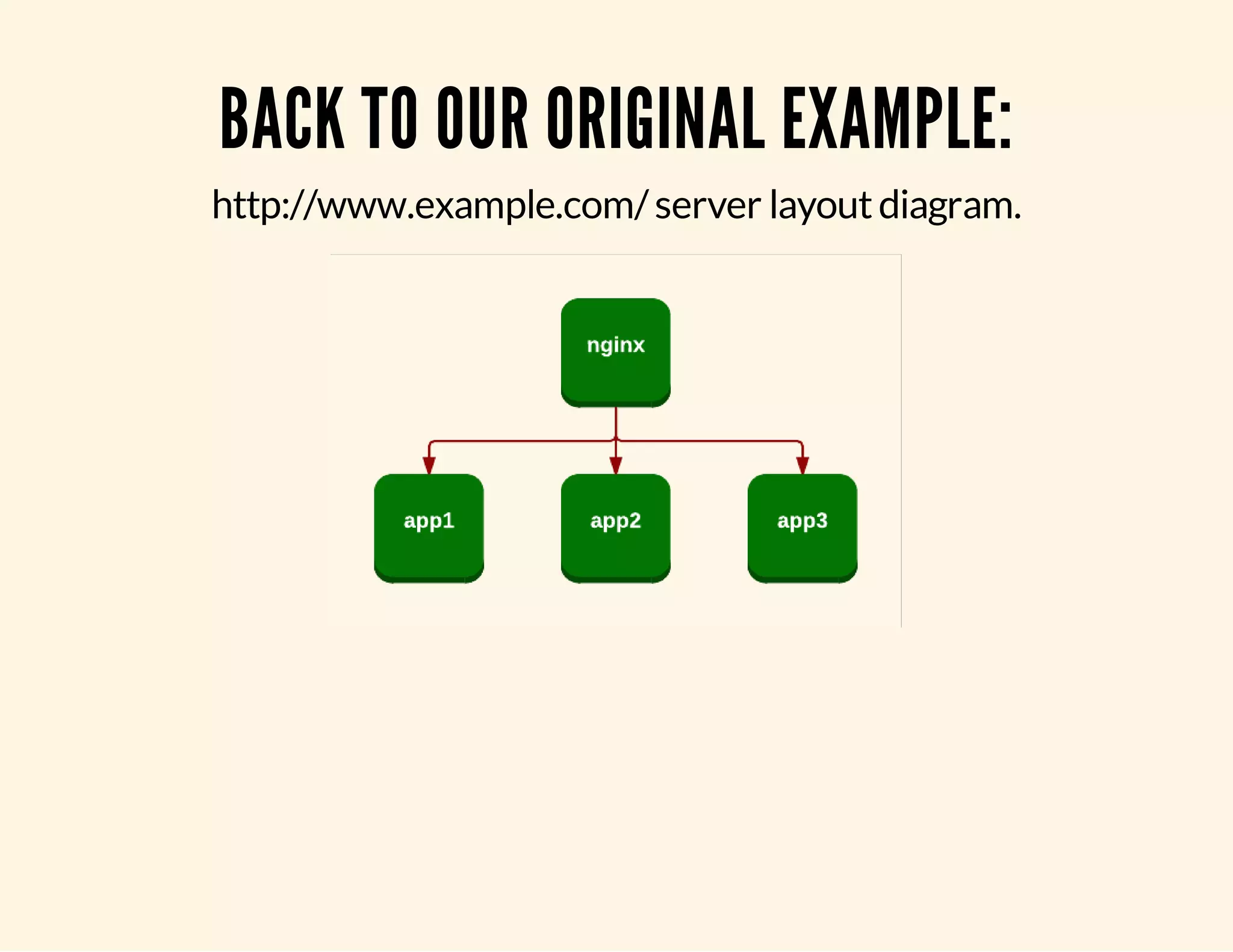
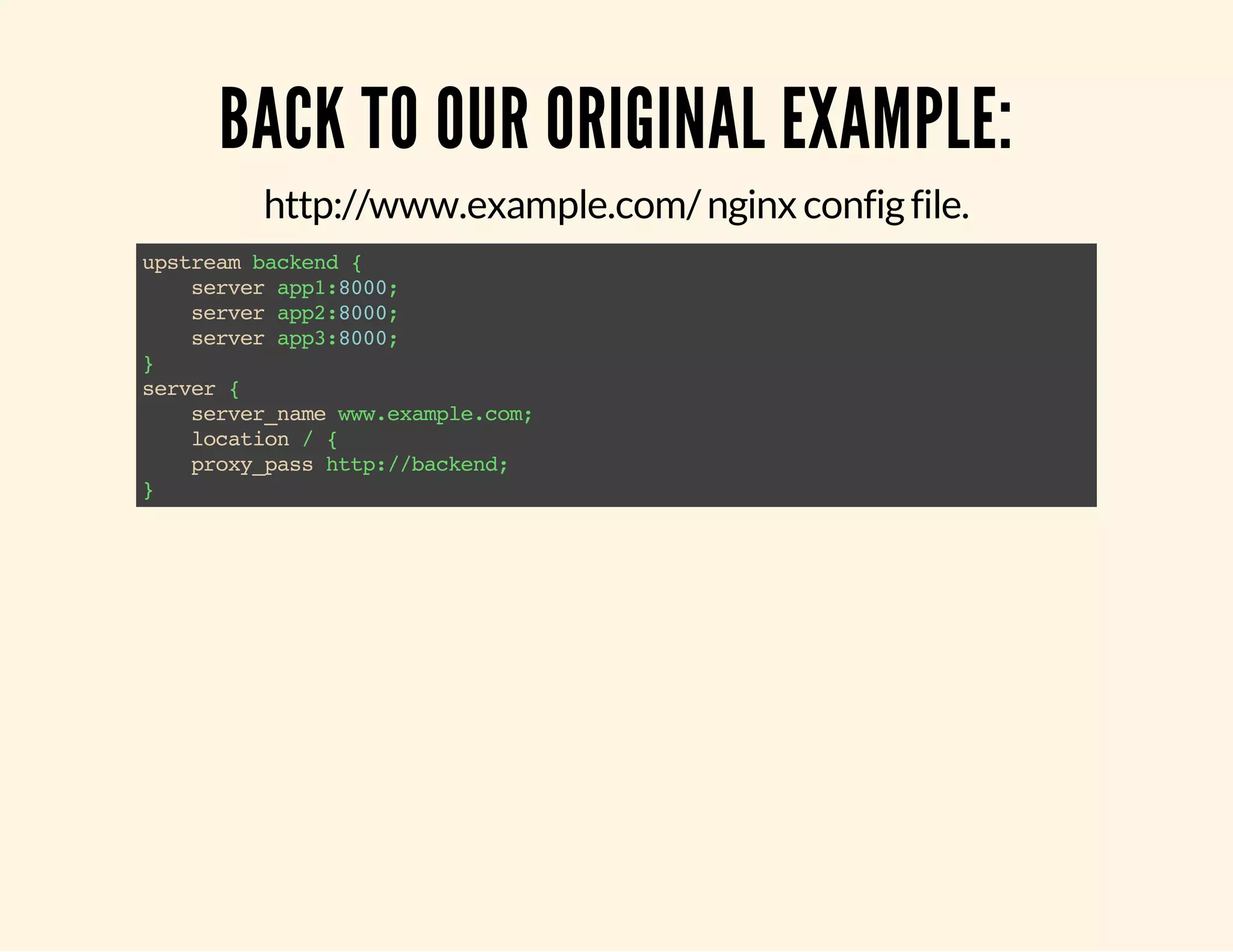
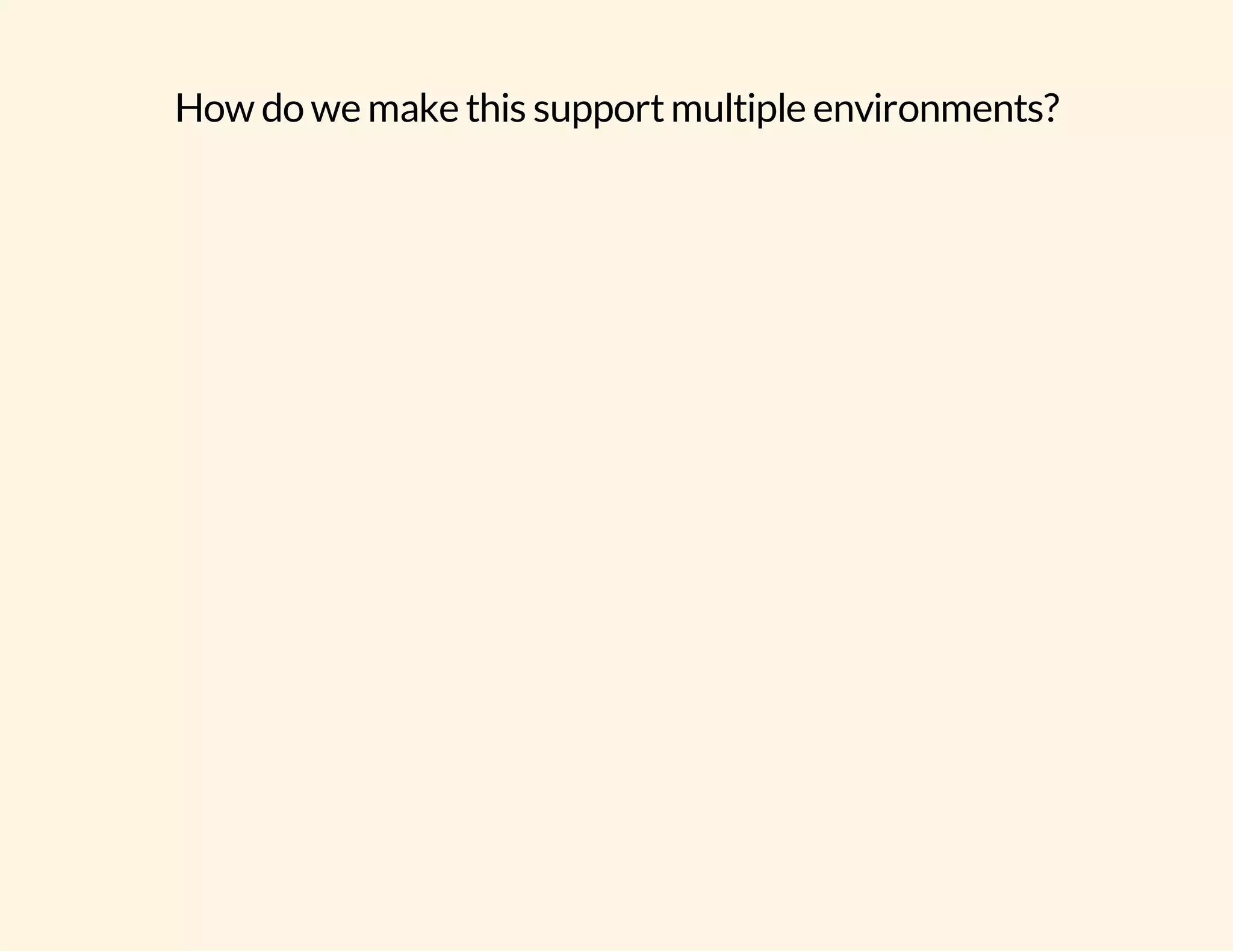


![Mock data [{ 'environment': 'production', 'server_name': 'www.example.com', 'upstreams': ['app1:8000', 'app2:8000', 'app3:8000']}, { 'environment': 'staging', 'server_name': 'staging.example.com', 'upstreams': ['stage_app1:8000', 'stage_app2:8000', 'stage_app3:8000']} ]](https://image.slidesharecdn.com/nginxcandothattestdriveyourconfigfile-141022103531-conversion-gate01/75/NGINX-Can-Do-That-Test-Drive-Your-Config-File-24-2048.jpg)


![A MORE COMPLEX EXAMPLE: Mock data [{ 'environment': 'production', 'server_name': 'www.example.com', 'upstreams': ['app1:8000', 'app2:8000', 'app3:8000'], 'no_access_locations': ['/api/healthcheck'], 'basic_auth': false, 'basic_auth_excluded_paths': []}, { 'environment': 'staging', 'server_name': 'staging.example.com', 'upstreams': ['stage_app1:8000', 'stage_app2:8000', 'stage_app3:8000'], 'no_access_locations': ['/api/healthcheck'], 'basic_auth': {'file': '.htpasswd'}, 'basic_auth_excluded_paths': ['/api/callback', '/api/rss'] }]](https://image.slidesharecdn.com/nginxcandothattestdriveyourconfigfile-141022103531-conversion-gate01/75/NGINX-Can-Do-That-Test-Drive-Your-Config-File-27-2048.jpg)
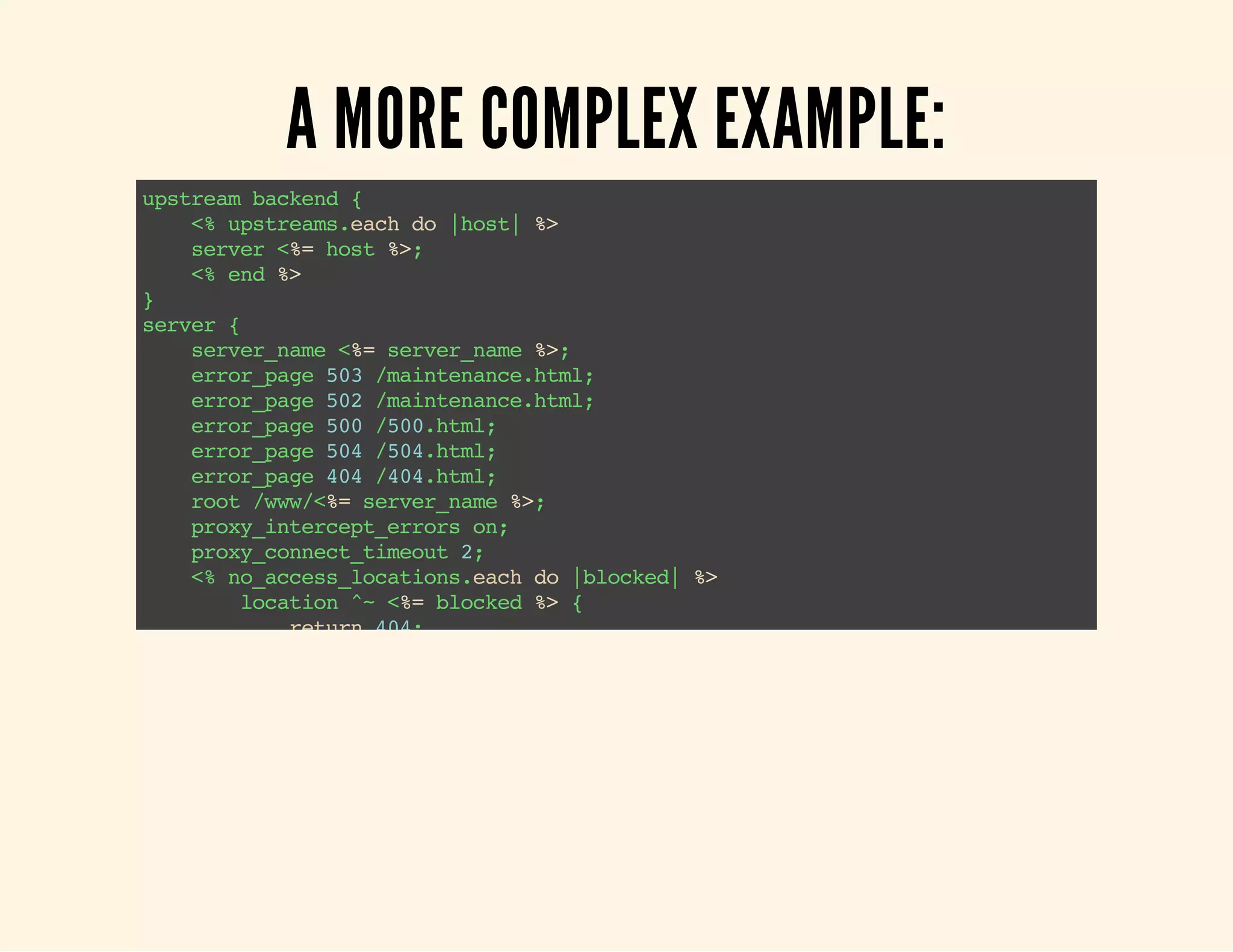
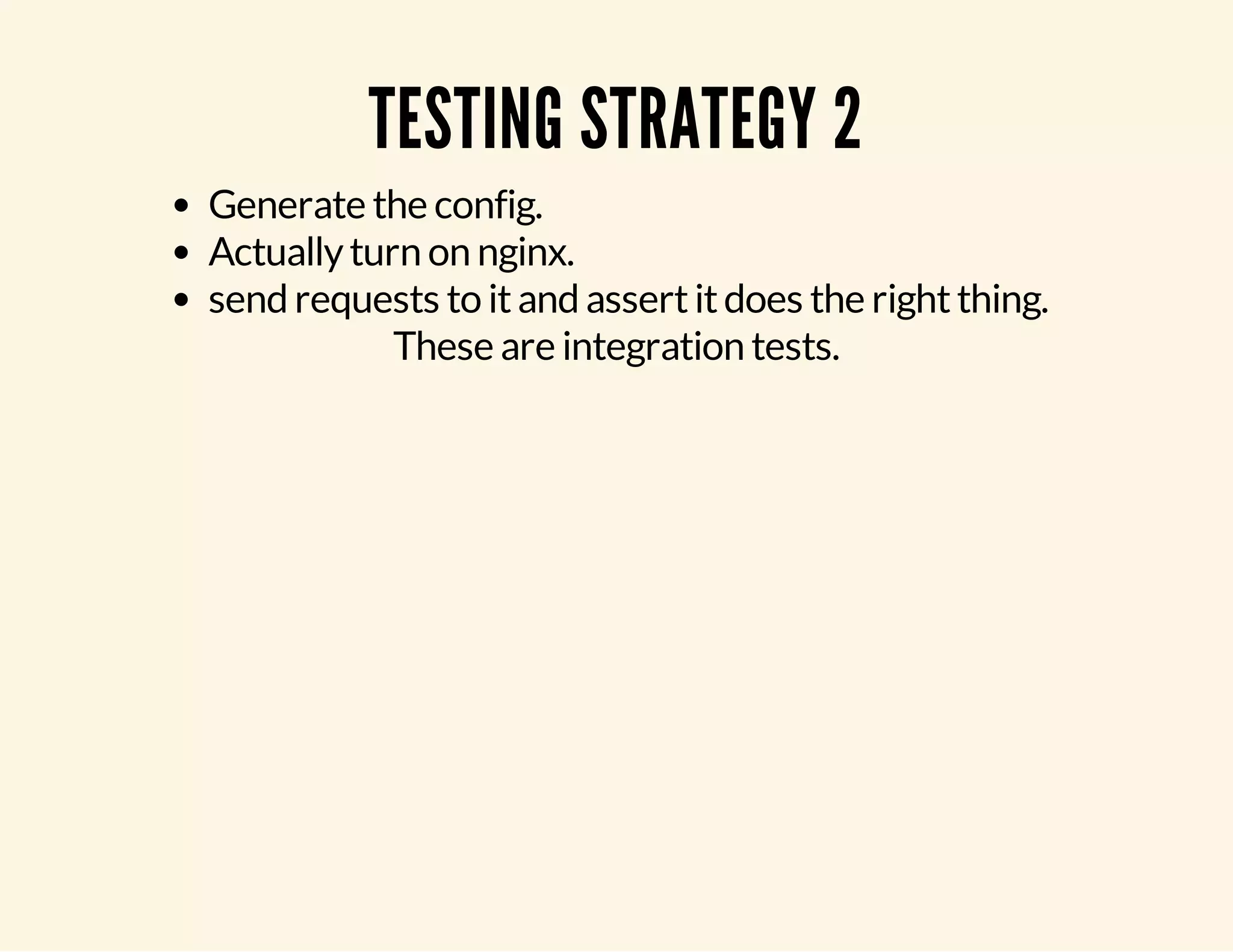
![INTEGRATION TESTING Assert that ip-address-based access works. {"server_name": "test-app.example.com", "ip_access": [{"127.0.0.1": ["/admin"]}]} assert `curl -kIs -H 'Host: test-app.example.com' http://192.168.0.2/admin | head -n 1 | awk '{print $2}'` == 404 assert `curl -kIs -H 'Host: test-app.example.com' http://127.0.0.1/admin | head -n 1 | awk '{print $2}'` == 502](https://image.slidesharecdn.com/nginxcandothattestdriveyourconfigfile-141022103531-conversion-gate01/75/NGINX-Can-Do-That-Test-Drive-Your-Config-File-30-2048.jpg)
